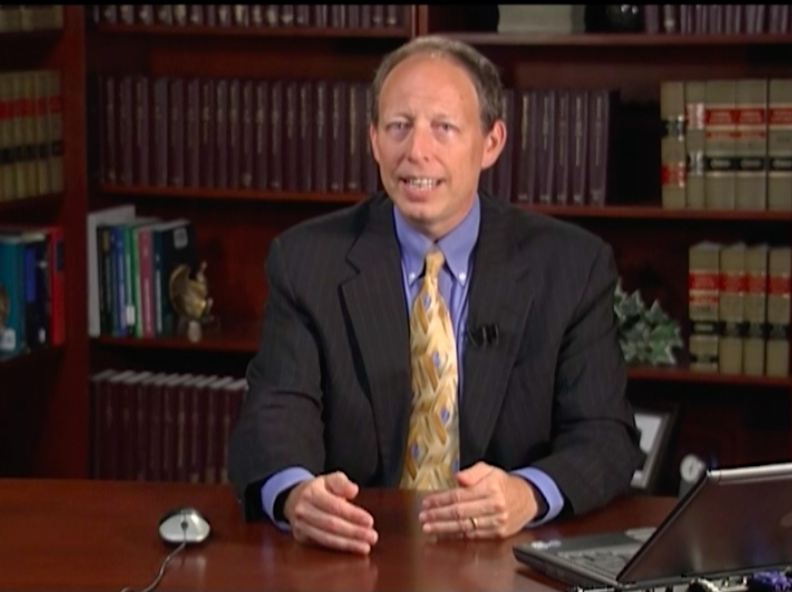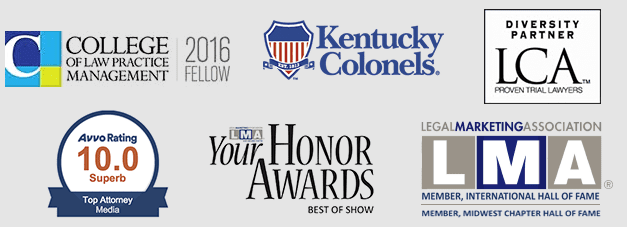Marketer: “When I want to get the lawyers on board, I always make it their idea.”
I’ve never cared for that approach — that’s not respecting the lawyers as intelligent adults. That’s infantilizing them; it’s treating them like children whose little egos need to be soothed and pampered so they don’t throw a tantrum. I say the heck with that.
They’re smart, tough, professionals who only bestow their respect upon those who have earned it. And marketers who let others to take credit for their ideas are teaching their employers that they don’t have any good ideas of their own. That’s not demonstrating that you’re invaluable and need a big raise. Rather, you’re making yourself replaceable by someone younger, cheaper, or less experienced.
Some time ago, I was asked on a Legal Marketing Association (LMA) email group how I structure my arguments to achieve effortless buy-in of innovative ideas and initiatives with skeptical groups of lawyers and marketing committees. My fundamental point was that it all comes down to education.
As a simple example, let’s say we’d like to redesign a firm’s letterhead to remove a long list of lawyer names. We’ve done this dozens of times for firms of all sizes, and I always follow the formula detailed below. Once I figured out this secret 25 years, I increased my professional effectiveness by 1,000%. It’s arguably the most vital lesson I teach marketers.
I think this is critical for everyone who works with lawyers to thoroughly understand.
First, as I regularly comment, “If (1) what I’m recommending is the best idea or action, and (2) I can teach lawyers what they need to know to position them to make a good decision, then (3) they should see that I’m right and agree with me.”
However, if they disagree with what I’m proposing, then either (1) I was wrong, (2) they’re stupid, or (3) I’ve failed to educate them sufficiently. I don’t know any stupid lawyers, which means that any battles are likely caused by a poor job of educating the lawyers. And that’s our fault, not the lawyers’.
I can explain something to marketers in two minutes that takes me an hour-long presentation with 50-100 PPT slides to explain to lawyers. Most marketers and administrators come from a similar vantage, experience, and frame of reference — we start generally on the same page, and we’re open to new ideas. Lawyers are not especially open, they don’t know much about marketing, and they have an exceptionally skeptical thought process.
That’s not a criticism, it’s many marketers’ personal experiences in marketing committee meetings. As marketers, we spend 8 hours a DAY thinking about marketing — our lawyers may not spend 8 hours a YEAR. We exhaustively research every variable before recommending a particular course of action to the marketing committee. Why should we expect lawyers to be able make an intelligent, educated, and correct decision the first time we throw it at them?
Regardless, in spite of their lack of information and education on any particular topic, if the lawyers are asked, they’ll always have an opinion. And once they voice that opinion in front of others, it’s very difficult to persuade them to change it. So before we allow them to subconsciously formulate that opinion, we must get them to buy into our view on the topic.
Here’s how I do that:
First, I do not lead with the conclusion. That is, I do not open with a general topic sentence using the classic journalistic style, something like “I think we should remove the names from our letterhead,” If I do that, they’ll disagree and pick me apart. They’ll identify 100 reasons why that’s a dumb idea, for example:
- “We’ve always done it this way!”
- “Everyone does it this way.”
- “My clients like seeing my name near the top!”
- “It’s more traditional, it’s classier.”
- “It shows how big we are.”
- “We don’t want people unknowingly calling our associates.” Etc.
I can never let that argument start.
Once it does, I’ve already lost. I’m done. It’s dead. Even though I may be 100% right, once they start piling on with “And here’s another reason you’re wrong!” it’s too late. I spent a lot of my early years in marketing losing important debates with my lawyers even though what I was advocating was right. In a free-flowing debate, they’ll win. They love arguing and they won’t stop until you give up, because from their experience they’re right and you’re wrong. So we must first provide them the information required to position them to make a well-informed decision.
Instead, I might start by quickly discussing design trends in the legal marketplace, what the leading firms are doing (discussing firms they’d aspire to become). I show actual examples of beautiful design from competing local firms (you can get them from your printing company), that don’t have the lawyers’ names on them.
I’ll validate that what they currently have was the right answer at the time it was created, that it looked absolutely beautiful. That is, I’m never suggesting that the original design was bad or poorly conceived, simply that since then, design has changed — as it always does over time. I might mention other obvious types of designs that have changed since the time this letterhead was created, i.e. it’s not just the firm’s letterhead — men were wearing three-piece suits, suspenders, and yellow ties, while women lawyers wore stiff, poofy hair and dresses with shoulder pads rather than the more open and casual approach we have today. Design changes have been spurred by the clean lines of Apple and the Internet. The business culture is less formal than it was back then and today’s design reflects that.
That is, I create hard evidence in support of my argument.
I might provide highlighted copies of any articles and blog posts that I can find that discuss and support the removal of names from the letterhead. I pull relevant quotes from articles, blog posts.
I’ll ask a friendly engraving or printing company how many of the past 25 letterhead re-designs they’ve printed have included all the lawyers names, and quote them. I’d ask a client/friend which design they prefer and provide the results, e.g. “I think having the lawyers’ names along the margin looks silly, and alphabetizing them implies that the most-senior lawyers have giant egos. At my company, we want to show our younger employees that we value them.” Lawyers are persuaded by client quotes. Note, whatever I’m advocating, I make a persuasive, logical evidence-based case for change. This helps the lawyers think “Huh, that makes sense. I never thought about it that way.”
I’d print out a sample letter on the current letterhead, then paste that same text into one of the printing company samples that have larger margins because they don’t have all the cluttering names on them, and show them how much more content fits on the new style — fewer two-page letters.
THEN, after they’re fully educated about this topic (this should take 15-20 minutes), NOW I can suggest that I’d like to update the firm’s letterhead to the same type of modern layout that all the top firms are using. At this point, they have learned why what they have isn’t good any more. They may have walked into the meeting loving their stationery, but 20 short minutes later, I’ve taught them to hate it, in a friendly, educational, interesting, and highly professional way, and lawyers love learning new things.
This is the structure I use when pitching anything — e.g. a new brand or website. I recommend that all marketers and administrators use it regardless of what we are seeking their agreement to — whether it’s a new piece of technology we want to purchase, a marketing-training program or other initiative we want to launch, a new employee to hire, or a big raise or bonus.
One added benefit of doing it this way is that we don’t have to “make it the lawyers’ idea.” I want marketers to make it YOUR idea. It’s a GOOD idea, it’s the RIGHT idea, and we are gradually teaching the lawyers that we are high-quality professionals whose ideas and efforts they should respect and trust. We’re not winging it, we’re approaching our decisions with a thoughtful, well-researched process and methodology that they can understand and respect, just like they’d have done it themselves if they were in our shoes. Lawyers appreciate that.
At least that’s how I approach it, and it’s served me well in conversations with lawyers and marketing committees for 25 years.
What do you think? What works for you? Do you have a different perspective?
————————————
Interested in booking Ross Fishman for your retreat, marketing training, or Ethics CLE program?
Contact Ross directly at ross@fishmanmarketing.com, or 1.847.921.7677!


